Historic Central United Methodist Church Reflects on its Complex Past as it Prepares to Close Reopening as Church of the Resurrection in Brookside
Published September 23rd, 2022 at 6:00 AM
Above image credit: The congregation of the historic Central United Methodist Church at 5144 Oak St. is reflecting on its complex past as it prepares to close. The United Methodist Church of the Resurrection will reopen the church in December. (Courtesy | Central United Methodist Church)The first sermon for what would become Central United Methodist Church likely rolled off the preacher’s tongue more easily than the last will this Sunday.
Back then, in 1844, ministers rode a circuit. They offered redemption to those who might have strayed from virtue, often preaching outdoors.
What later became Kansas City was still an unincorporated township. The Civil War was nearly 20 years in the future.
As the story is told, the Rev. James Porter is believed to have challenged, “If anyone would like to start a church in this place, come and sit on this log.”
Five people took a seat.
Each Sunday of this September, the Rev. Sally Haynes has stood before the current congregation of Central and recounted such vignettes from the Brookside church’s archives.
They’re sermons of hope and history. They urge those present to accept the message of “in our end is our beginning.”
The decision to close was made by the congregation in June.
Central, the oldest continuously operating Protestant church in Kansas City, voted 72-9 to cease to exist, allowing for a new beginning.
By December, the space will open as the newest location for the largest United Methodist church in the nation and the largest mainline church in the city.
The United Methodist Church of the Resurrection, often referred to as COR, is led by Senior Pastor Adam Hamilton.
“This is a remarkable opportunity to continue and expand upon the historic work Central has done in building a Christian community in this part of the city,” Hamilton said.
The story has come full circle. The first members of COR came from Central.
Hamilton was the associate pastor at Central before he started a new church, now known for its sprawling Leawood campus, but also encompassing four other COR sites in greater Kansas City. Brookside will be the sixth.
“I think this is going to ensure our history and that we are around for the future because it is so important,” Haynes said. “We are such the right location for Resurrection.”
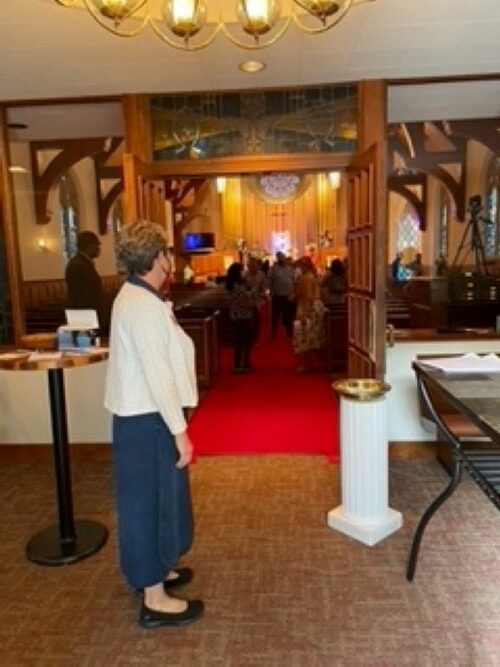
Haynes acknowledges that the sweeping legacy of the 178-year-old Central is difficult to condense.
Her backdrop while recounting that story has been carefully arranged pieces of stained glass atop the altar communion table, backlit and affixed to a white cloth.
Each piece – a lamb, Christ’s face, his body and a hand flexed to emphasize a biblical point – appear to float ethereally.
The colorful images are remnants salvaged from a fire that once brought down the back wall of the Brookside church in the mid-1960s.
There are a lot of fires in Central’s story, with multiple churches burning in various locations.
Some members wonder half seriously if they were fires of wrath, given that the church’s early years are entwined with the sin of slavery.
Border wars split not just Kansas and Missouri, but also people of faith.
Fights over slavery severed the Methodist Episcopal faith into North and South factions, a division Central would play a role in healing, 75 years after the nation reunited after the Civil War.
Pews in a long-gone early church location became hospital beds for wounded Confederate soldiers after the Battle of Westport. They were considered prisoners, as the Southern-leaning pastor had fled, leaving the church to Union forces.
There’s ready acknowledgement today that enslaved hands built the congregation’s first church at about 5th and Wyandotte streets in 1852. Those laborers were considered the property of the pastor at the time, the circuit preacher James Porter.
Virtually every social and economic issue that has touched this area has challenged Central too – two World Wars, white flight, floods, civil rights battles and more recently Black Lives Matter.
Today, Central proudly stamps itself as part of the Reconciling Ministries Network, which works to seek justice for people of all sexual orientations and gender identities.
Central is also the genesis of some of the best-known social service organizations in the city – including the YMCA in Kansas City, Della Lamb Community Services, Kingswood Senior Living and KC Shepherd’s Center.
All of this is being recounted by Haynes as she works with a team of members who are combing and categorizing the church’s vast archives.
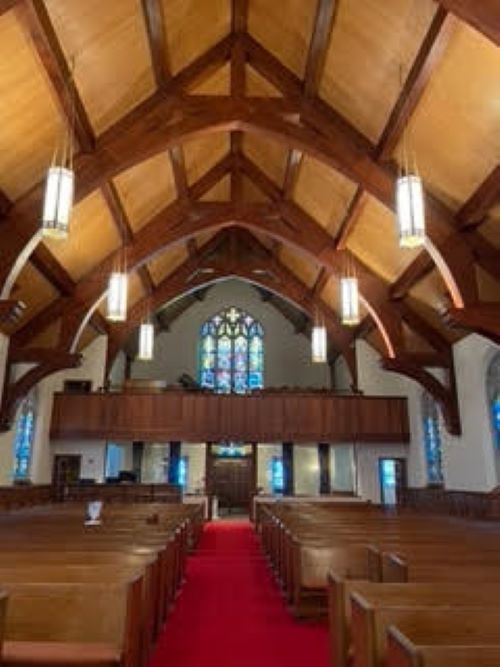
In her sermons, Haynes links the more tantalizing stories with a reverence for how faith plays out in families, in every child’s bible class, baptisms, funerals and weddings.
As a college student, Haynes met her husband Andy at church and was later married at Central.
The stone church with its more modern addition sits just off the Harry Wiggins Trolley Track Trail at about 52nd and Oak streets in Brookside, a familiar site to many.
“The short story is we were in a general decline for decades,” Haynes said.
Similar to many older congregations, the members were aging. There was no financial calamity. But there was a struggle to fill the pews and to gather energetic hands to volunteer for the many duties that envelope active congregations.
“We weren’t in crisis, but we could see it from where we were standing,” Haynes said. “The challenge was thinking about the future.”
Abolitionists, Slaveholders and Preachers
Central’s complex history coincides with much that defines Kansas City. Few other continuously existing local organizations could track through such a wide swath of history.
For perspective, consider that founding preacher Porter’s mother is noted because she was held captive by the British for a year during the Revolutionary War.
Her son brought her, his wife and their son to this area in 1834 from Tennessee. Porter also brought 40 enslaved people, setting in motion much of the early church history.
Land grants allowed him to acquire 365 acres in what is now the Beacon Hill and Longfellow neighborhoods, centering around 27th Street and Troost Avenue.
It was a plantation, a farm of orchards, with cabins for the enslaved people surrounding the Porters’ “big house.”
“The wise preacher would not bring up this part of our heritage, but the honest one cannot turn away,” Haynes said in her Sept. 4 sermon.
She explained that during the Civil War, Central was a Methodist Episcopal South church, aligning with the Confederacy.
“When the Northerners took over this area, led by the Jayhawkers, they set their sights on driving out, imprisoning, or doing worse to Southern sympathizers,” Haynes told the congregation.
The clergy weren’t harmed, initially. Eventually, they too became targets.
“Brother Pugh,” the pastor then, fled as the Jayhawkers came for him, in “what sounded like an old western, with Brother Pugh on horseback going full speed, with a gang of guerillas chasing after him. He made it to the railroad just in the nick of time, leaving his pursuers watching the departing train in frustration as he rode the rails to safety.”
But he’d abandoned the church.
A Northern bishop soon sent a new pastor, representing the side of the faith that supported the Union.
That’s how the church became a prison and hospital for wounded Confederate soldiers after the Battle of Westport in 1864.

The women of the church, many Southern sympathizers, came back to help care for the soldiers.
“Church pews were turned to face each other, so that the two benches pressed together would make a bed with high sides,” Haynes recounted.
Haynes also recited the recollections of an 11-year-old boy named Edward who helped his mother tend to the men.
“He described the cacophony of noise, from men groaning and moaning or screaming if a limb was being amputated,” Haynes said in her sermon.
Haynes has also been preaching repentance.
She said of Central, “We, who owe part of our faith heritage to people who fought and died for the right to enslave other humans, bring our sinful selves to Jesus for repentance.”
A mural at Central, in the lower level, commemorates this early history. The painting, bucolic with the images of early preaching by the river and grim with a soldier being loaded on a cot, will stay as part of the new church.
Through the years, the congregation built new churches at 9th and Walnut, 9th and Lydia and 11th and The Paseo. The Paseo church, built in 1906, had the largest auditorium outside of Municipal Auditorium downtown.
William Jennings Bryan spoke there in 1910. It was damaged in a 1927 fire and was destroyed by another fire in 1934. The congregation continued moving further south.
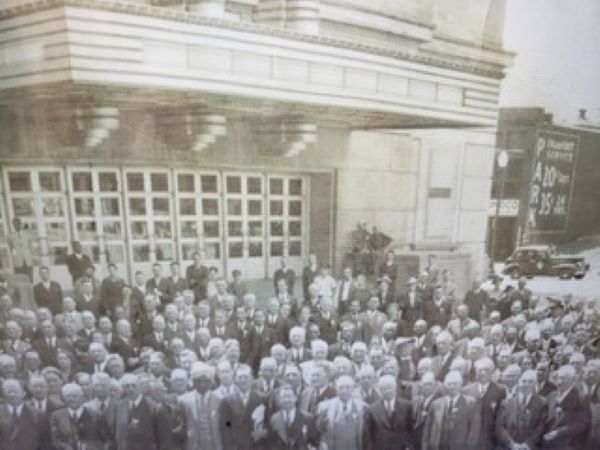
After merging with another church, ground was broken in 1938 for the current location in Brookside. And in 1939, the two arms of the Methodist church that had been severed over the slavery question held a conference in Kansas City to reunify.
“Rev. Sela was pastor when this building was built, and he walked out of church one Sunday because our ushers refused to seat a Black couple in the sanctuary,” Haynes recalled during the Sept. 18 sermon.
Later, the Brookside church would be the site of an early meeting for an effort that would eventually lead to desegregating Kansas City businesses, a civil rights measure passed by voters in 1964.
Church Closing, All Items Must Go
A series of tables are filled with Central United Methodist swag, free for the taking.
Staff members were helping serve coffee and desserts after a recent 10:30 a.m. Sunday service, encouraging people to take as many items as they want.
A church with such longevity has stockpiles.
There are stacks of paperweights made from the marble of the altar before a renovation. Notecards with a pastel drawing of the church entrance in spring. Blue and white mugs commemorating Central’s 175th anniversary. Children’s Adventure Bibles. Nativity scene Christmas ornaments. And stacks of well-worn hymnals.
Andy Haynes, an attorney and the husband of the current pastor, thumbed through each, checking the label in the front, which marked who had donated it.
He pulled the ones given by parishioners that he knew personally and that were still living.
Other churchgoers milled around the sanctuary, taking pictures of the tall stained glass windows on the sides of the church, which were added after the 1965 fire.
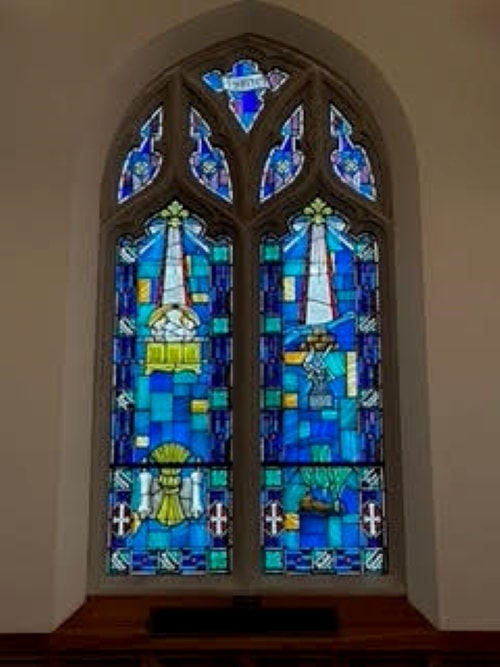
People who were members years ago have returned in recent weeks.
Chris and Cherie Wyatt lingered after the Sept. 18 service, walking the sanctuary to take photos and reminisce.
They live in Kansas City, Kansas, now, but fondly remember the days when they attended Central and Rev. Elbert Cole was the pastor.
“He was just such an incredible thinker,” they both agreed.
The couple moved to Kansas City from Texas in the mid-1970s and began searching for a church.
At first, they thought the beautiful architecture of the building might mean that it was “too hoity toity.”
Their then-toddler son (who’d shunned other churches they visited) ran happily into the nursery. They took it as a good sign.
Grieving has also been a part of these last few months. One woman posted on the church’s Facebook page:
“This makes me so sad! Our wedding, (Dr. Mather performed the service in May of ‘59) our daughter’s wedding, our son’s memorial service and my husband’s memorial service, years on Pastor Parish Committee, singing in the choir, Mather Class, Joanna Guild and UMW. Wonderful friends. So sorry for the necessity of this.”
The last line of her message is felt by many. They understand what’s happening, especially with more people being unchurched, no matter what their faith.
For nearly 50 years, Central had two dynamic leaders. Thomas B. Mather pastored for 25 years until 1965, followed by Cole, who led the church until 1988.
Both men would have been “tough acts to follow,” Haynes said.
After them, Central churned through a series of pastors, each with individual strengths. But none were able to reverse the declining membership.
By the time COVID made in-person worship impossible, the regular attendees each Sunday numbered about 120.
The church was steeped in traditional ways. It hadn’t been offering worship services online and needed to pivot to address the pandemic.
Haynes had arrived in July 2019, right before COVID disrupted so much of life.
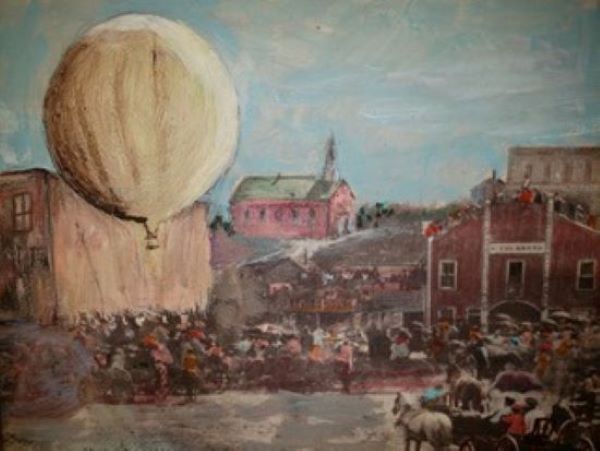
Now, people from this area and much further away watch worship via Facebook or log on later to YouTube.
The staff of the Early Childhood Center has all been hired by the Church of the Resurrection, to ensure a seamless transition for families.
Longtime member Gary Wesche has been with the church through numerous new pastors and believes this shift will not be much different.
Wesche is the creative talent behind the altar display of the stained glass and also designs the flowing silk displays that adorn the church during Easter and other important seasons of worship.
He’s also the caretaker (and human voice of) Walter, one of the puppets that has traditionally been used for the children’s sermon, but that took on a larger role during services during the pandemic.
The puppets had been stored, unused and forgotten for years, in an attic space. Wesche expects the characters will continue to have a role as new families join the congregation.
“They do all live at my house, however, so they won’t end up in the attic again,” he said with a grin.
The choice of the new pastor is scheduled to be announced at the last service.
Hamilton will be in attendance.
Central holds a special place in Hamilton’s success as a church leader.
People took to phone banks at Central in 1990, spending hours calling strangers to draw members for the new church Hamilton was starting to serve southern Jackson and Johnson counties.
Eventually, 60 members of Central would be among the first congregants of the Church of the Resurrection.
“I love this congregation,” Hamilton said in a statement. “In many ways it is our mother church.”
Haynes, who graduated from the St. Paul School of Theology in 1987, will shift to the Leawood campus. But by next summer, she plans to retire. She also holds a doctor of ministry degree.
She initiated the idea of joining COR, realizing that it offered a network of support that could support church efforts in the community.
For now, she just hopes that she can make it through the last service of Central United Methodist without too much emotion.
“I think this is going to be one of their most popular and successful sites,” she said of the United Methodist Church of the Resurrection, Brookside.
New signage and branding for the church is planned to include the words “at historic Central.”
Mary Sanchez is senior reporter for Kansas City PBS.


